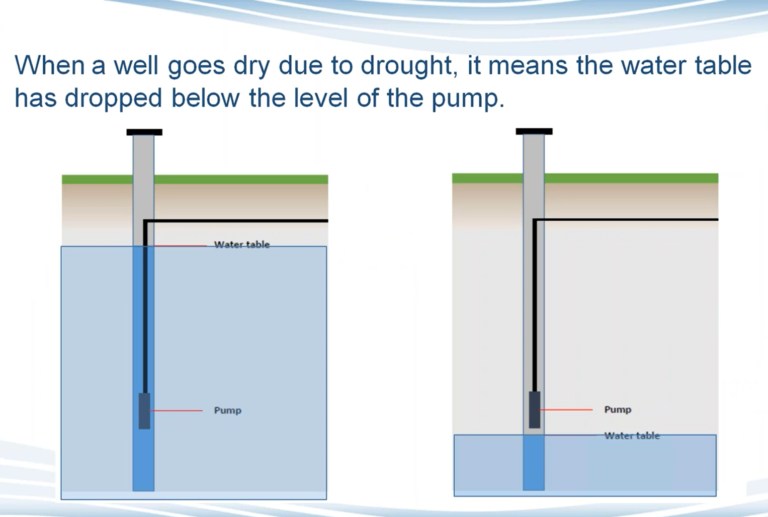With summer in full swing, now is a good time to prepare and consider how drought conditions can have an effect on groundwater supplies and your private water well.
Aquifers that supply water wells can be recharged in multiple ways including rainwater infiltrating the ground, surface-water leakage from rivers, streams, lakes, and wetlands or even man-made injection of water. The recharge rate must equal the water extracted from the well or the water table will continue to decline. When the water table drops below the level of the pump, the well will fail.
One drought event over a short period will not likely dry up a well, but over time lack of soaking rains can impact the water table and become problematic, especially for shallow wells.

How to protect your well during drought
Although drought is most common in the west, monitoring, conserving and recycling water are good practices in any region of the country and at all times of year. Choosing water and energy-efficient appliances, repairing leaks, and collecting rainwater for outdoor use all all great ways to conserve the water in your well. WellOwner.org has more ideas for conserving water.
Keep up-to-date on your well maintenance and have your groundwater professional check your water levels so that you will be prepared and fully informed on the condition of your well.
Should the water table at your well fall below the pump, sometimes the well can be drilled deeper to extend its depth further or back below the water table. Deepening a well does not guarantee more water. A water well system professional can determine whether the size and condition of the well casing will permit the well to be drilled deeper.
Staying water wise this summer this summer will not only protect your well resources, but those of the community around you!
Go in-depth on drought and water wells with this free webinar from WellOwner.org
